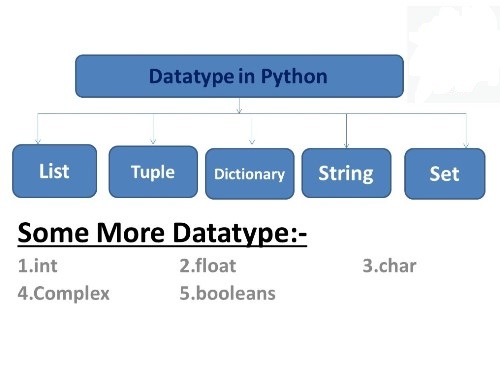Datatypes in Python
Data types define the type of data a variable can hold, for example an integer variable can hold integer data, a character type variable can hold character data etc.

Classification of datatype
- List.
- tuple.
- Dictionary
- String
- Sets
Some more Datatype
- int
- float
- char
- complex
- boolean
int
It contains integer value.
Example
x=2 print(type(x))
Here the output of above code is "<class 'int'>"
Note
Here "type()" is function return the datatype of the variable.
float
It contains integer Decimal value..
Example
x=2.0 print(type(x))
Here the output of above code is "<class 'float'>"
char
It contains integer Decimal value..
Example
x="e" print(type(x))
Here the output of above code is <class 'char'>
booleans
Booleans represets the value in the term of "True" or "False".
it returns only any expression is given like if we compare two or more operends then the value return in the form of booleans
Example
print(5<2) print(2==3)
Here the output of above code is
True
False
Many times it is used with "if-else".
Example
if 5>2:
print("Small Code")
else:
print("5 is less then 2")
Output
Small Code
bool() function
bool() function are used to evaluate any datatype into in term of "True" or "False".
Example
x=2 y="Small Code" print(bool(x)) print(bool(y))
Output
True True
Note
- Any string except "" return True.
- Any number except 0 return True..
- Any datatype except (),{},[] returns True.
Complex Number
As we all known comlex number is in the form of "a+bj" here "a" is a real part and "bj" is a imaginary part.
Example
x=2+5j print(type(x))
Output
<class 'complex'>
complex() function
complex() function are used convert any datatype to complex form.
Example
x=2 y=4.0 print(complex(x)) print(complex(y))
Output
(2+0j) (4+0j)